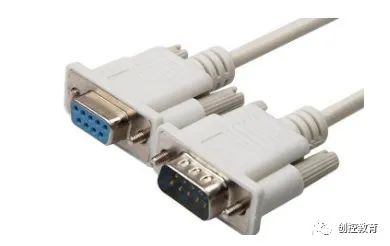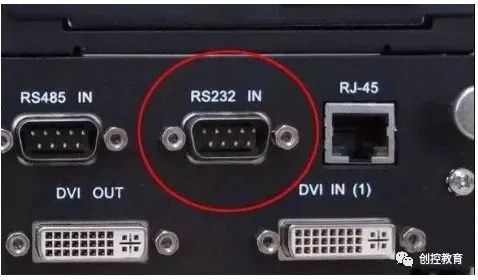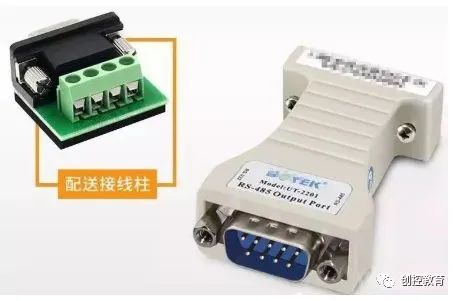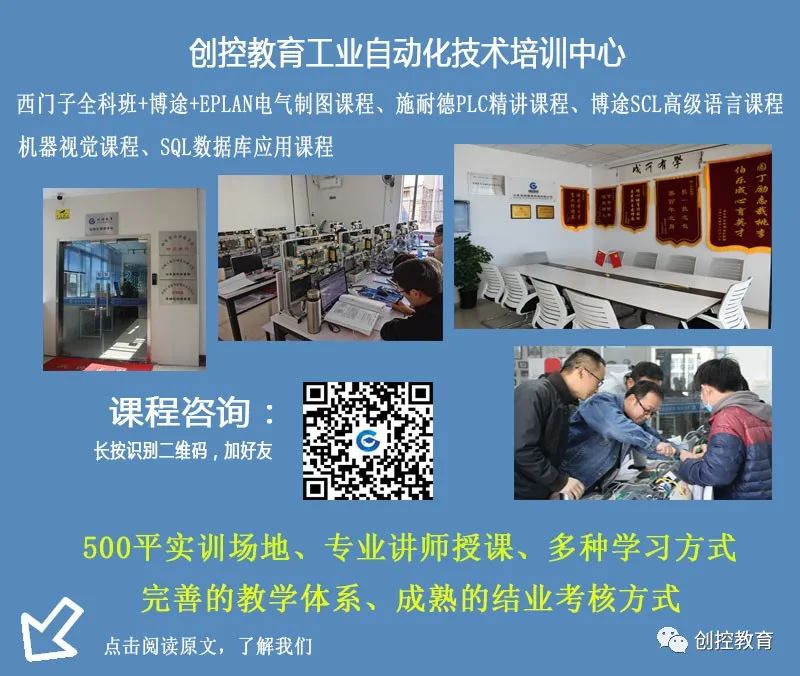Siemens Comprehensive + TIA Portal + EPLAN Electrical Design Video Recordings Available at Low Package Prices!
Chuangkong Education Siemens Comprehensive Class Course Introduction
RS232 and RS485 are common interfaces in low-voltage applications. Many friends mention the differences between them, so today let’s learn about them together.

1. Physical Structure of the Interface
1. RS232 Interface:
One of the computer communication interfaces, the RS-232 interface typically appears in the form of 9 pins (DB-9) or 25 pins (DB-25). Generally, personal computers have two sets of RS-232 interfaces, referred to as COM1 and COM2.

The connector uses a DB-25 model with a 25-pin socket. Some devices connected to a PC via the RS-232 interface do not use the transmission control signals from each other and only require three interface lines: “Transmit Data”, “Receive Data”, and “Signal Ground”. Therefore, a DB-9 9-pin socket is used, with transmission lines adopting shielded twisted pairs.

2. RS485: RS485 does not have a specific physical shape and is an interface adopted according to the actual conditions of the project.

2. Electronic Characteristics of the Interface
1. RS232: The signal level of the transmission level signal interface is relatively high (signal “1” is “-3V to -15V”, signal “0” is “3 to 15V”), which can easily damage the interface circuit chip. Additionally, it is incompatible with TTL levels (0~”<0.8v”, 1~”>2.0V”), so a level conversion circuit is needed to connect with TTL circuits. Moreover, it has poor anti-interference capability.
2. RS485: The differential signal logic “1” is represented by the voltage difference between the two wires as + (2—6) V; logic “0” is represented by the voltage difference as – (2—6) V. The signal level of the interface is lower than that of RS-232, making it less likely to damage the interface circuit chip, and this level is compatible with TTL levels, allowing for easy connection with TTL circuits.
3. Communication Distance
1. RS232: The transmission distance of RS232 is limited, with a maximum standard transmission distance of 15 meters, and it can only communicate point-to-point, with a maximum transmission rate of 20kB/s.
2. RS485: The maximum wireless transmission distance of RS485 is 1200 meters. The maximum transmission rate is 10Mbps; at a transmission rate of 100Kb/S, the maximum communication distance can be achieved. Using impedance-matched, low-loss dedicated cables can achieve 1800 meters! Beyond 1200 meters, repeaters can be added (up to 8), making the transmission distance close to 10Km.
4. Support for Multi-Point Communication
RS232: The RS232 interface allows only one transceiver to be connected on the bus, and cannot support multi-station transceiver capability, so it can only communicate point-to-point and does not support multi-point communication.
RS485: The RS485 interface allows up to 128 transceivers to be connected on the bus. It has multi-station communication capability, allowing users to easily establish a device network using a single RS485 interface.
5. Differences in Communication Lines
RS232: Can use three-core twisted pairs, three-core shielded cables, etc.
RS485: Can use two-core twisted pairs, two-core shielded cables, etc. In low-speed, short-distance, and non-interference situations, ordinary twisted pairs can be used; conversely, in high-speed, long-distance transmission, dedicated RS485 cables (generally 120Ω) must be used (STP-120Ω for RS485 & CAN, one pair of 18AWG), and in harsh interference environments, armored twisted shielded cables (ASTP-120Ω for RS485 & CAN, one pair of 18AWG) should be used.
Supplement: Since the transmission distance of RS232 is only 15 meters, what is its function? In fact, its applications are very wide; it can connect various devices, such as monitoring, and upgrading or debugging other devices may require it. Its function is quite similar to USB, and with the increasing prevalence of USB ports, more devices that convert USB to RS-232 or other interfaces will emerge. Through the USB interface, more RS-232 devices can be connected, achieving higher transmission speeds, realizing true plug-and-play, while solving the disadvantage of USB interfaces not being able to transmit over long distances (USB communication distance is within 5 meters).
RS-232
It was established in 1970 by the Electronic Industries Association (EIA) in conjunction with Bell Systems, modem manufacturers, and computer terminal manufacturers as a standard for serial communication.Its full name is the “Serial Binary Data Exchange Interface Standard between Data Terminal Equipment (DTE) and Data Communication Equipment (DCE)”. This standard specifies the use of a 25-pin DB-25 connector, defines the signal content for each pin of the connector, and specifies the voltage levels for various signals. Later, IBM simplified the RS232 to a DB-9 connector, making it the de facto standard. Industrial control RS-232 ports generally only use RXD, TXD, and GND lines.
Few Signal Lines
The RS-232 bus specifies 25 lines, including two signal channels: the first channel (referred to as the main channel) and the second channel (referred to as the secondary channel). Using the RS-232 bus allows for full-duplex communication, typically using the main channel, while the secondary channel is used less frequently.In general applications, using 3 to 9 signal lines can achieve full-duplex communication, and using three signal lines (receive line, transmit line, and signal ground) can achieve a simple full-duplex communication process.
Flexible Baud Rate Selection
RS-232 specifies standard transmission rates of 50b/s, 75b/s, 110b/s, 150b/s, 300b/s, 600b/s, 1200b/s, 2400b/s, 4800b/s, 9600b/s, and 19200b/s, allowing for flexible adaptation to devices with different rates.For slow peripherals, a lower transmission rate can be selected; conversely, a higher transmission rate can be chosen.
Uses Negative Logic Transmission
It specifies that the level for logic “1” is -5V to -15V, and the level for logic “0” is +5V to +15V.The purpose of adopting this electrical standard is to enhance anti-interference capabilities and increase communication distance.The noise tolerance of RS-232 is 2V; the receiver can recognize signals as low as +3V as logic “0” and signals as high as -3V as logic “1”.
Long Transmission Distance
Since RS-232 adopts a serial transmission method and converts the TTL level of the microcomputer to RS-232C level, its transmission distance can generally reach 30 m.If optical isolation is used with a 20 mA current loop for transmission, the transmission distance can reach 1000 m.Additionally, if a modem is added to the RS-232 bus interface, it can be transmitted over wired, wireless, or fiber optic connections, allowing for even greater distances.
Two Physical Interfaces
One connector for the RS-232 interface is the D13-25 25-pin socket, where the plug is usually on the DCE side and the socket is on the DTE side.
RS-485
Intelligent instruments developed with the maturity of microcontroller technology in the early 1980s have dominated the global instrument market, primarily due to the need for enterprise informatization, and a necessary condition for instrument selection in enterprises is to have networking communication interfaces.Initially, data was output as analog signals for simple process quantities; later, the instrument interface was the RS232 interface, which could achieve point-to-point communication, but this method could not realize networking functions. The subsequent emergence of RS485 solved this problem.
(Content sourced from the internet, copyright belongs to the original author)
Disclaimer: If copyright issues arise, please contact for deletion!No individual or organization bears relevant legal responsibility.
Siemens Comprehensive + TIA Portal + EPLAN Electrical Design Video Recordings Available at Low Package Prices!
Chuangkong Education Siemens Comprehensive Class Course Introduction
